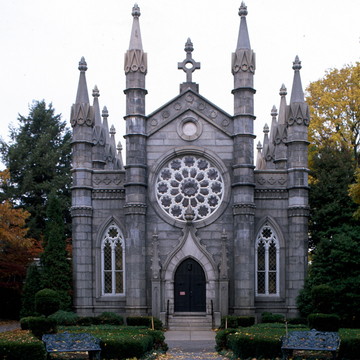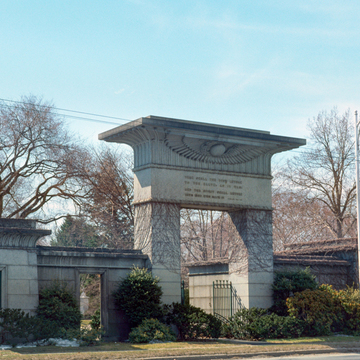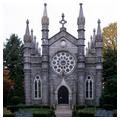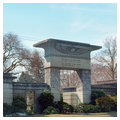The nation's first rural landscape cemetery, Mount Auburn is a site of national significance. In 1825 Dr. Jacob Bigelow, physician and professor at Harvard, called a meeting of concerned citizens and proposed the creation of a private, nonsectarian cemetery in the suburbs of Boston. In 1831 Mount Auburn Cemetery was founded by members of the newly established Massachusetts
You are here
Mount Auburn Cemetery
1831, Henry A. S. Dearborn; 1832, 1842–1851, Jacob Bigelow; 1896–1898, Willard Sears. 580 Mount Auburn St., Cambridge and Watertown.
If SAH Archipedia has been useful to you, please consider supporting it.
SAH Archipedia tells the story of the United States through its buildings, landscapes, and cities. This freely available resource empowers the public with authoritative knowledge that deepens their understanding and appreciation of the built environment. But the Society of Architectural Historians, which created SAH Archipedia with University of Virginia Press, needs your support to maintain the high-caliber research, writing, photography, cartography, editing, design, and programming that make SAH Archipedia a trusted online resource available to all who value the history of place, heritage tourism, and learning.


















